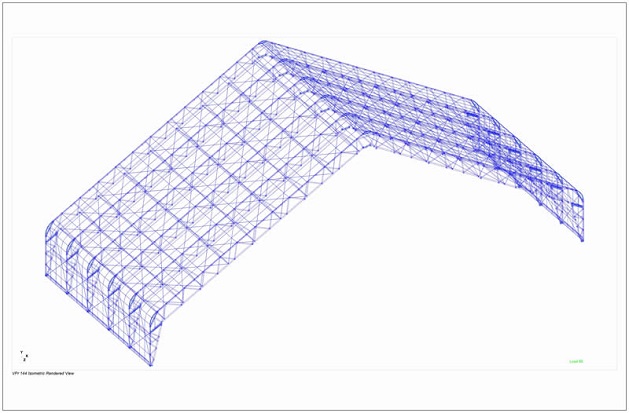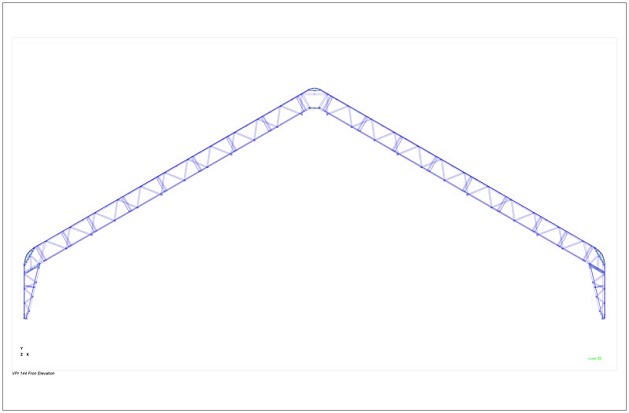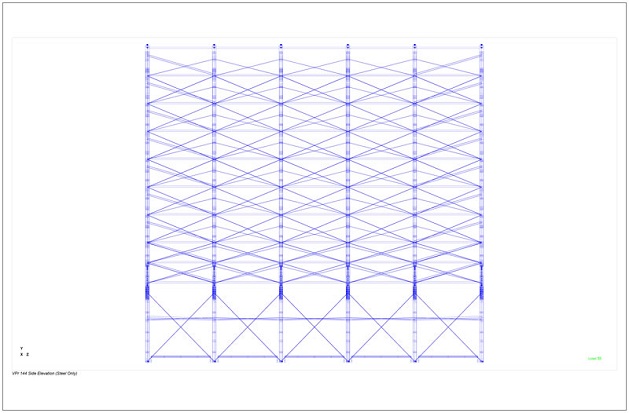Calhoun Super Structure
Engineering
Calhoun Super Structures uses cutting edge technology when it comes to engineering your fabric tension building to your exact site loads, use and application. Being one of the only names in the industry to utilize 3D Finite Element Non-Linear Analysis, we can give detailed points of pressure or stresses on each specific area of your building. Knowing that each building, location and application is unique, we use only the most precise and premier technology currently available. Our team of highly trained Engineers, Designers and Detailers are what sets Calhoun Super Structures apart from the competition. They have made it their personal mission to ensure that your building is engineered to be the strongest, most reliable structure on the market.



Calhoun Super Structures- 3D Finite Element Nonlinear Analysis
The present standard of care (as established by the nature of the analysis typically completed in when assessing the adequacy of the structural elements in a tensioned fabric structure) involves a linear elastic portal frame analysis wherein the load is approximated and applied to a typical or critical frame in two dimensions. In this way, a linear elastic portal frame analysis reasonably predicts the vertical load carrying capacity of the frame in plane so long as the assumption holds that the frames remain in plane and the members providing sway stability have adequate stiffness to ensure this assumption remains true. Unfortunately, the behavior of the fabric cladding prevents this assumption from holding true in most cases and is never true in cases where the fabric is tensioned over the frame without direct mechanical attachment as is often the case. The portal frame analysis procedure must then rely upon hand calculations sourcing code specified alignment charts and still more approximations to estimate the out of plane (lateral) forces from the load and fabric response to the supporting elements. For these structures, the out of plane forces and load path are often quite complex and currently not broadly understood as there has been little or no full scale testing. Thus, these forces cannot be accurately predicted using proven and existing elastic approximation methods for approximating lateral forces as with other types of standard construction. Without an accurate method to conservatively approximate the out of plane forces, combined force checks cannot be thoroughly investigated. One consequence of relying on this approach and asserting the frames remain plane when in fact they do not is that the effective distance between bracing members for members in compression may be larger than the actual distance because these members lack adequate stiffness or pre tension initially or due to the fact that they are nearing their proportional limits in compression themselves. When this occurs even a conservative assumption regarding the effective distance between bracing equal to the actual distance may prove disastrous leading to catastrophic failures given the effective distances may have been grossly underestimated.
Calhoun Super Structures believes it is the duty of pre-engineered manufacturing to maintain high levels of both reliability and sustainability meaning that the structures provided should be the safest and most environmentally responsible structures possible while still maintaining cost efficiency. This is a difficult task given that these cornerstones are often scaled in opposing fashion. As such, a balance must be achieved between them in order to arrive at a design that satisfies each to above minimum standards.
In order to achieve this end, Calhoun Super Structures utilizes advanced 3D finite element nonlinear analysis to investigate thoroughly the load carrying capacity of their structures in response to the code specified loading. The advantage being that the complex nonlinear behavior of the fabric and three dimensional behavior of the system is fully addressed such that the approximations and estimates required when assuming plane frames are rendered obsolete. Given the reliability of the structural systems is derived from the standard of care which currently involves a series of approximations that do not hold true for these structures, the result is a structural system that exceeds the code specified safety limits while providing exceptional efficiencies in design. These efficiencies are then passed along to the customer completing the cycle.